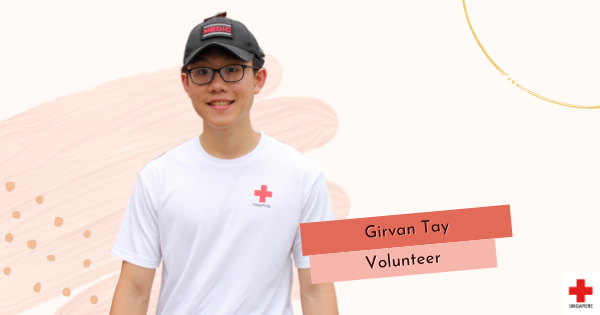
Years ago, Girvan Tay was consulting a doctor for a ligament tear in his leg. He had sustained the injury at East Coast Park, as he often cycled from Tiong Bahru to Changi Village and back.
Ironically, it was his doctor who told him that there were first aiders at East Coast Park who could have treated him for his injury.
He recalled, “I thought it was cool that first aiders provide first aid to park-goers in need.”
Spearheading ‘Project Red’
After Girvan left the army, he pursued his medical studies in Nanyang Technological University’s (NTU) Lee Kong Chian School of Medicine. Girvan and his faculty mates observed that while medical students were being equipped with much knowledge of pathology and physiology, they did not have many opportunities to engage the community in hands-on work till after their graduation. Also, the simulations in their preclinical education were often with stable simulated patients, unlike potentially life and death situations in first aid settings.
“To equip medical students with practical community engagement opportunities, we initiated ‘Project Red’ (Red for Red Cross) between Singapore Red Cross (SRC) and NTU’s Lee Kong Chian School of Medicine. First Aid instructors from Singapore Red Cross Academy would train around 50 of our medical students in first aid each year. In return, the medical students would volunteer in SRC’s First Aider on Wheels (FAOW) and other Community First Aid (CFA) events. Each medical student has to fulfil 24 volunteering hours over two years.” explained Girvan.
He added, “I feel that everyone can be described to have their own baseline of well-being. Every minute, every second, there are people falling off their baseline in a plethora of ways. When we encounter such instances, we can either choose to act or do nothing. Sometimes even though we choose to act, we may not be equipped with the necessary skills and knowledge to assess and address that person’s needs effectively. Being trained in first aid ensures that we are in a position to help them in what I consider to be very fundamental ways - that is, physically and psychologically. I enjoy volunteering with FAOW as I can use my first aid skills to hopefully help restore them back to their baseline. I have been volunteering in FAOW almost every week for about two years.”
Attending to park-goers in need
While most FAOW volunteers would provide first aid treatments for cuts and fractures, Girvan has attended to more serious cases. In one instance, a girl was suffering from an asthma attack as her inhaler wasn’t working. In another, someone who was stung by a sea urchin. The most serious case he had attended to was a cyclist who sustained numerous injuries on his face, arms and pelvis after a collision with another cyclist.
Girvan believes in sharing his experiences through first aid refreshers with other volunteers so they can learn together.
“Despite how experienced we may be, we still run the risk of mentally shutting down and panicking when we attend to someone. There is always that small element of fear and anxiety - this is especially so whenever it’s something that we may not have encountered before. First aid is a skill that constantly needs to be refreshed and put to practice. Practice will empower us to act in spite of that fear,” he explained.
While the number of cases varies each time they take a shift, Girvan estimates they provide around five first aid treatments in a shift on average.
As long as they get better
As first aiders are first to respond, they do not usually get to see if the people whom they have treated eventually get better.
“We treat them to stabilise their condition and thereafter, they leave. When people are injured, they are normally in a state of shock. The last thing on their minds would be to thank the person who helped them, which is perfectly understandable. Sometimes I wonder how they are and whether they have recovered and gone back to their daily routine. One memorable instance was when we treated a cyclist who was quite badly injured to the point that he was in a daze and unable to speak properly when we were attending to him. We had to call an ambulance for him. The day after, I got a call from him. To my relief, he was speaking fluently as he thanked the team and updated us regarding his condition,” explained Girvan, also a responder with SRC’s Home Monitoring and Eldercare (HoME+).
He urges people to learn first aid and put the first aid skills into practice.
“Instead of being apathetic, you can choose to help. Learn first aid if you want to help people physically and psychologically. You can join FAOW or be a Home Monitoring and Eldercare responder, and make a positive difference by helping someone restore their baseline,” Girvan affirmed.
By Sondra Foo, Corporate Communications
|

